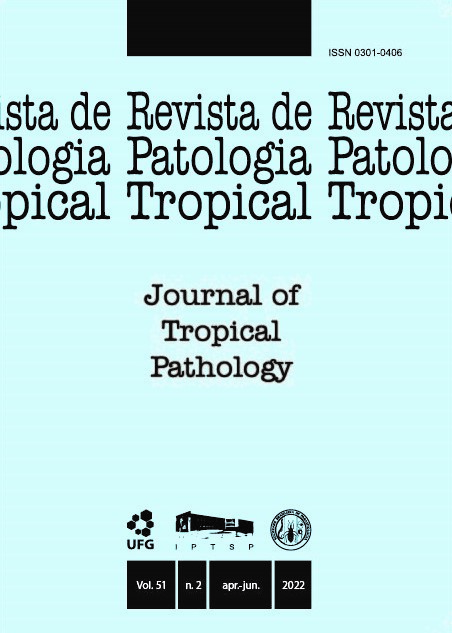Fasciola hepatica prevalence in cattle from the Abancay, Curahuasi and Tamburco districts, Abancay province-Apurímac, Peru during the 2018 rainy season
DOI:
https://doi.org/10.5216/rpt.v51i2.71734Resumo
This study aims to determine the prevalence of Fasciola hepatica in cattle from the Abancay, Curahuasi, and Tamburco districts in the Abancay province, Apurímac, Peru, during the 2018 rainy season, and the association between prevalence and age, breed, and district of origin. In total, 295 stool samples were collected, namely 34 from Tamburco, 193 from Curahuasi and 68 from Abancay. For coproparasitological evaluation, the four-sieve sedimentation technique described by Girão and Ueno was used. The total prevalence of F. hepatica in the cattle sampled in this study was 50.8% (150/295), and the prevalence by district was 42.6% (29/68) in Abancay, 53.8% (104/193) in Curahuasi, and 50% (17/34) in Tamburco. No significant association was found with the variable district of origin (p<0.05). However, using a bivariate logistic regression analysis, a significant association was found between F. hepatica prevalence and the breed variable (p=0.008). A similar significant association with the breed variable (p=0.007) was also found using a multiple logistic regression analysis. The high prevalence of F. hepatica identified in this study is consistent with previous reports made in the Apurímac Region, an area considered hyperendemic for the parasite, thus highlighting the need for effective health programs to control disease distribution, which may have an economic and, because of its zoonotic character, public health impact.
KEY WORDS: Fasciola hepatica; liver fluke disease; cattle; Abancay; Apurímac; Peru.
Downloads
Downloads
Publicado
Como Citar
Edição
Seção
Licença
The manuscript submission must be accompanied by a letter signed by all authors stating their full name and email address, confirming that the manuscript or part of it has not been published or is under consideration for publication elsewhere, and agreeing to transfer copyright in all media and formats for Journal of Tropical Pathology.

